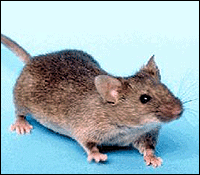CMDCMiracle
심혈관 대사질환센터
Cardiovascular and Metabolic Disease Center
Mitochondrial Research Affinity Collaboration-Laboratories & Engineering
0
Cardiovascular and Metabolic Disease Center
Mitochondrial Research Affinity Collaboration-Laboratories & Engineering
Home
> 0
Mouse Study Shows Gene Therapy Provides Temporary Protection from Radiation
- 작성자한진
- 작성일2006-08-13 14:14:45
- 조회수2415

Total406개
[ page1/28 ]
| No. | 제목 | 작성자 | 작성일 | 조회수 |
|---|---|---|---|---|
| 406 | 한진, 김형규, 염재범 교수님과 함께한 2024 Spring Congress on Lipid and Atherosclerosis of KSOLA 춘계 학술대회 수상 2건 2024.04.18 | 작성자 | 2024.04.18 | 5 |
| 405 | 인제대 의과대학 김형규 교수, 생리학 분야 최고 학술상 수상 2023.11.09 | 관리자 | 2023.11.09 | 49 |
| 404 | 인제대, 과기정통부 ‘2023년도 기초연구실 지원사업’ 선정 2023.09.13 | 관리자 (web_admin) | 2023.09.13 | 87 |
| 403 | 인제대 교수팀 '돌연사 주범 심부전 원인 규명' 2023.09.13 | 관리자 (web_admin) | 2023.09.13 | 73 |
| 402 | 2022학년도 인제학술상 수상자 선정 결과 2023.01.05 | 관리자 | 2023.01.05 | 111 |
| 401 | 안전관리 우수연구실 인증 취득 2023.01.05 | 관리자 | 2023.01.05 | 65 |
| 400 | 한진교수 화의자의학상 수상 2023.01.05 | 관리자 | 2023.01.05 | 129 |
| 399 | 이온통로 학회 -Amy 포스터상 수상 2019.01.15 | 김형규 | 2019.01.15 | 2,603 |
| 398 | 센터 겸임교수 조성우 교수 - 한빛사 -JACC Vascular Imaging 2018.12.08 | 김형규 | 2018.12.08 | 2,816 |
| 397 | 2017 IMPACT Symposium 개최 첨부파일 2017.10.31 | 김보현 | 2017.10.31 | 2,603 |
| 396 | 경암바이오유스 2017 첨부파일 2017.08.11 | 김보현 | 2017.08.11 | 2,886 |
| 395 | KORUS 2017 첨부파일 2017.06.21 | 김보현 | 2017.06.21 | 3,011 |
| 394 | IMPACT 2016 심포지엄 개최 안내 첨부파일 2016.04.18 | 관리자 | 2016.04.18 | 4,021 |
| 393 | IMPACT 2015 심포지엄 개최 안내 첨부파일 2015.04.20 | 서대윤 | 2015.04.20 | 2,881 |
| 392 | 2015 중점연구소 성과 전시회 첨부파일 2015.03.31 | 김형규 | 2015.03.31 | 2,473 |

 1
1 
